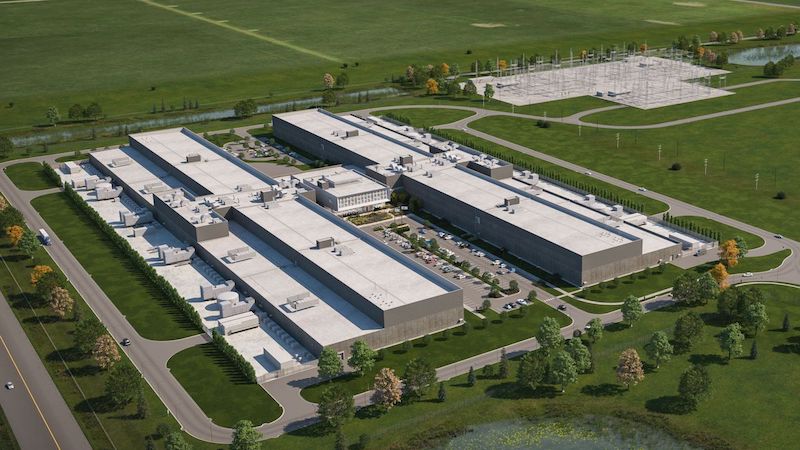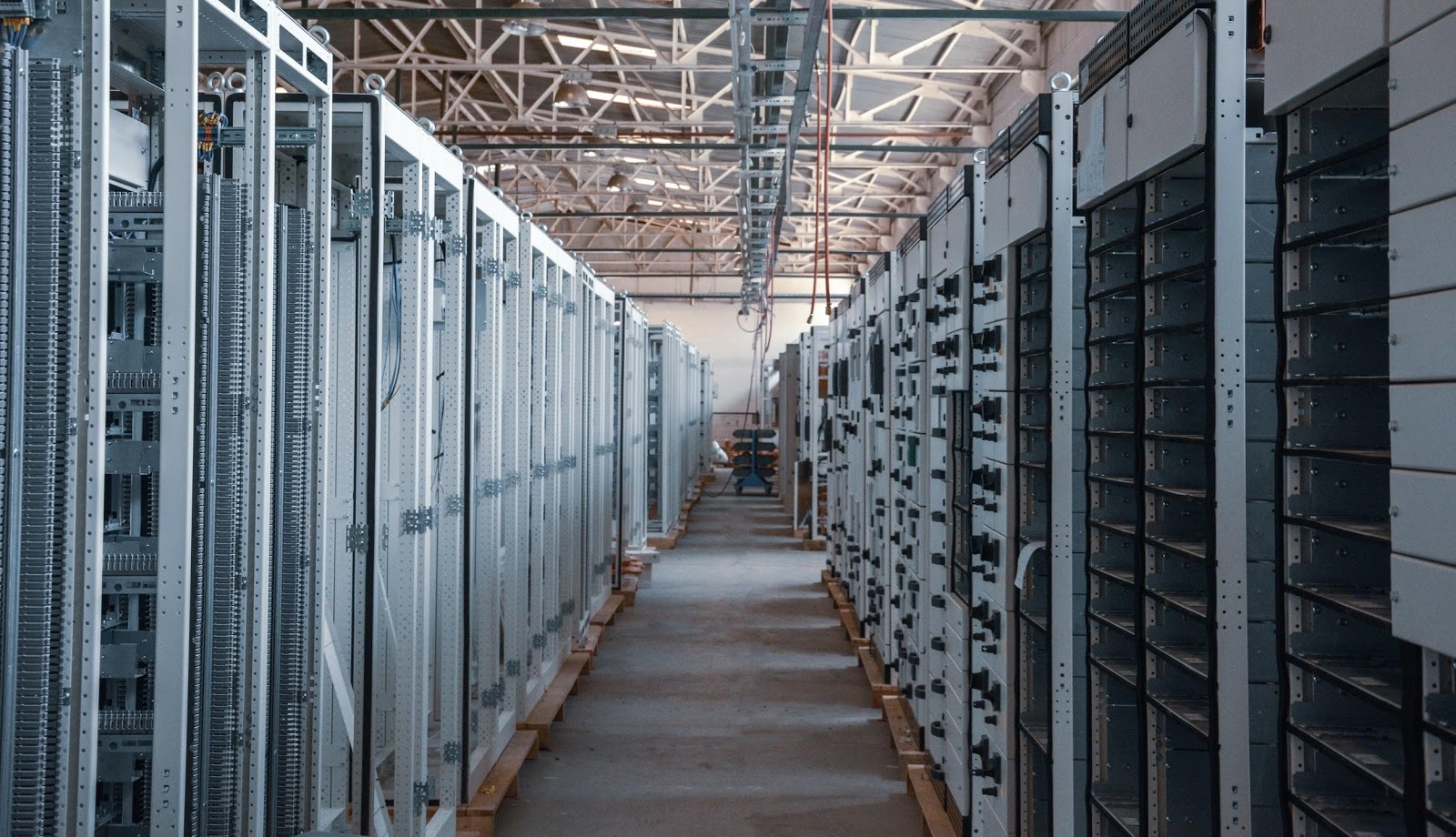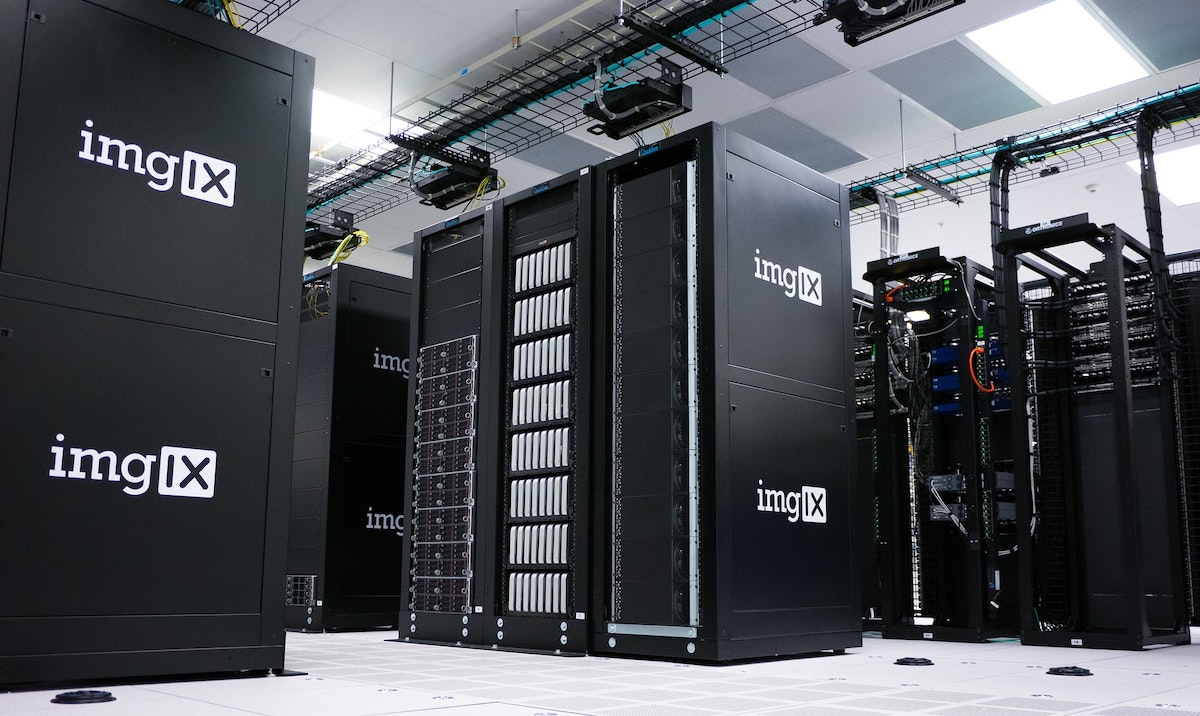After a relatively soft investment year in 2020, spending on data center infrastructure globally is expected to rebound strongly next year, by 6% to $200 billion, according to the market research firm Gartner. And any skepticism about the potential growth of the data center sector has been swept aside by the quarantining associated with the spread of the coronavirus.
“The COVID-19 pandemic and the global recession concreted data centers as critical to maintaining our daily lives in a virtual world,” says Evan Antonides, LEED AP, Senior Vice President of Technology for the national general contractor HITT. “The data center market will continue to grow as the world rethinks the way we do business and life.”
Dave Hall, CEO of Clune Construction, observes that the data center sector “was already exploding” before the pandemic. Clune is anticipating growth of between 6% and 10% annually for the next three to five years.
DPR Construction is equally sanguine about this market’s prospects. “Even once the pandemic wanes, virtual learning and working from home will not go away,” predicts John Arcello, DPR’s advanced technology core market co-lead. “The Internet of Things, edge computing, 5G, augmented reality and virtual reality will continue to drive growth.”
Arcello adds that Hyperscale data centers are likely to increase their market shares in part by acquiring small-to-medium size competitors.
Hyperscale data centers—those massive wholesale colocation facilities engineered to meet the needs of giants like Amazon and Google—are this sector’s engine.
Synergy Research estimates that their number grew to 541 worldwide through the second quarter of 2020 (38% of which operate in the U.S.), compared to 390 at the close of 2017. Another 176 hyperscale facilities were in the pipeline.
Research and Markets projects that the global market for data center server racks alone will expand at an annual rate of 9.4% and hit $5.9 billion 2025. Demand for edge computing should also be robust; Gartner estimates that more than half of enterprise-generated data will be created and processed outside of a data center or the cloud by 2022, up from less than 10% in 2019.
Building data centers with a purpose
What’s right for users “boils down to what the organization prioritizes,” says Turner Burton, president of Hoar Construction. Along with hyperscale facilities, Burton sees continuing demand for the construction of smaller, multi-location data centers, to meet the service expectations of users outside of large cities.
Sources contacted for this article agree that multi-tenant data centers will prevail. In Oregon, “we’re seeing more and more large campuses for multi-tenant building types,” says Damon Cannon, Business Unit Manager–Oregon market for the construction engineering firm McKinstry.

Facebook's $800 million, 907,000-sf data center planned for DeKalb, Ill. The project, which will be Facebook’s 12th data center in the U.S. and the 16th overall, will sit on a 505-acre parcel of land owned by the social media company. Rendering: Facebook
HITT’s Antonides adds that multi-tenant facilities are important, “as most businesses realize it’s more cost-effective to outsource their data storage.”
Size matters, of course, but “it’s more about purpose-built facilities, based on user need,” explains DPR’s Arcello. To that end, the hyperscalers are meeting capacity by building their own data centers or deploying in colocation facilities that have scaled their products to support hyperscale demand, observes Ben Kaplan, Senior Vice President–Global Critical Facilities for Turner Construction, which delivers $600 million in data center projects annually.
Clune Construction’s Hall says his firm is hearing more and more about clients developing groups “to chase the Build-to-Suit opportunities for their customers.”
Kaplan says the pandemic accelerated the adoption and deployment of digital infrastructure and corresponding tools. “And we are starting to see smaller deployment at the edge. We believe this aspect of the market will grow, as 5G and other factors make it important to have infrastructure close to end users.”
As a result, Arcello believes infrastructure to support data centers—such as microgrids, renewables, energy storage, and 5G towers—will shift “from opportunistic to necessary.”
Quicker data center construction is essential
When choosing data center sites, Microsoft told the Des Moines Business Record that it considers 35 weighted criteria that include proximity to customers; the availability of power, fiber optic sources, and skilled labor; and energy rates. Next September, Microsoft is scheduled to begin construction on two new data centers in West Des Moines, Iowa. Each will be about 1.8 million sf and cost about $1 billion.
The industry’s dilemma, however, is that demand for data centers and the services they provide is outpacing supply and construction capacity. The sector’s challenges, say AEC experts, include a shortage of skilled labor, a distressed supply chain, and safety issues that include installing equipment before it’s properly tested.
The urgency of getting data centers up and running faster has caused AEC firms and their clients to consider different construction techniques: Arcello, for one, points specifically to design for manufacturing and assembly, and design for industrialized methods of construction.
Burton of Hoar Construction believes that speed-to-market is more likely when design, engineering, and construction firms collaborate as early as possible in the development cycle.
“Major industries such as healthcare, banking, and even multifamily construction will all have increased need for data storage, connectivity, and security at a pace that doesn’t appear to be slowing for the foreseeable future,” he says. “We’re very focused on process and continuous improvement.”
Several sources note that modular design and construction are keys to meeting future computing and storage demand. McKinstry’s Cannon has seen “base-build” construction activities increase in Oregon, “preparing for quick buildout of leasable space.” These campuses, he adds, are being planned for multiple buildings constructed in multiple phases.
ALSO SEE: Data centers as a service: The next big opportunity for design teams

As data centers compete to process more data with lower latency, the AEC industry is ideally positioned to develop design standards that ensure long-term flexibility, write's VIATechnik's Gregg Young. Read more.
Hitt’s Antonides says that modular design and construction lend themselves to “nontraditional geographical options” where power and land are cheaper but construction workforces are not as prevalent.
As hyperscale cloud firms plant their flags in Tier 2 and 3 markets, simpler designs that drive safety and efficiency are becoming more common, says Clune’s Hall.
Prefab construction is also on the rise for data centers, says Turner’s Kaplan. Antonides elaborates that while the average wattage and square footage of large-scale data centers have more than tripled over the last decade, the cost per megawatt is down “as a result of more efficient equipment and scalable builds that emphasize prefabrication rather than stick-built construction.”
A sustainable future
Looking ahead, AEC experts only see blue skies for the data center sector. Antonides points to the $10 billion Joint Enterprise Defense Infrastructure (JEDI) cloud computing contract between the federal government and Microsoft as “just the beginning,” as the government sector seeks to fulfill demand. Hitt sees this trend as a potential gold mine for hyperscalers and data center REIT providers.
Given the commitments that giant hyperscalers have made to achieving net-zero energy consumption in their operations within the next 15 to 20 years, both McKinstry and Clune Construction foresee an even bigger push toward data center sustainability, especially in their use of power generated by renewable sources.
Related Stories
| Aug 11, 2010
Colonnade fixes setback problem in Brooklyn condo project
The New York firm Scarano Architects was brought in by the developers of Olive Park condominiums in the Williamsburg section of Brooklyn to bring the facility up to code after frame out was completed. The architects designed colonnades along the building's perimeter to create the 15-foot setback required by the New York City Planning Commission.
| Aug 11, 2010
Wisconsin becomes the first state to require BIM on public projects
As of July 1, the Wisconsin Division of State Facilities will require all state projects with a total budget of $5 million or more and all new construction with a budget of $2.5 million or more to have their designs begin with a Building Information Model. The new guidelines and standards require A/E services in a design-bid-build project delivery format to use BIM and 3D software from initial ...
| Aug 11, 2010
Opening night close for Kent State performing arts center
The curtain opens on the Tuscarawas Performing Arts Center at Kent State University in early 2010, giving the New Philadelphia, Ohio, school a 1,100-seat multipurpose theater. The team of Legat & Kingscott of Columbus, Ohio, and Schorr Architects of Dublin, Ohio, designed the 50,000-sf facility with a curving metal and glass façade to create a sense of movement and activity.
| Aug 11, 2010
Residence hall designed specifically for freshman
Hardin Construction Company's Austin, Texas, office is serving as GC for the $50 million freshman housing complex at the University of Houston. Designed by HADP Architecture, Austin, the seven-story, 300,000-sf facility will be located on the university's central campus and have 1,172 beds, residential advisor offices, a social lounge, a computer lab, multipurpose rooms, a fitness center, and a...
| Aug 11, 2010
News Briefs: GBCI begins testing for new LEED professional credentials... Architects rank durability over 'green' in product attributes... ABI falls slightly in April, but shows market improvement
News Briefs: GBCI begins testing for new LEED professional credentials... Architects rank durability over 'green' in product attributes... ABI falls slightly in April, but shows market improvement
| Aug 11, 2010
Luxury Hotel required faceted design
Goettsch Partners, Chicago, designed a new five-star, 214-room hotel for the King Abdullah Financial District (KAFD) in Riyadh, Saudi Arabia. The design-build project, with Saudi Oger Ltd. as contractor and Rayadah Investment Co. as developer, has a three-story podium supporting a 17-story glass tower with a nine-story opening that allows light to penetrate the mass of the building.
| Aug 11, 2010
Three Schools checking into L.A.'s Ambassador Hotel site
Pasadena-based Gonzalez Goodale Architects is designing three new schools for Los Angeles Unified School District's Central Wilshire District. The $400 million campus, located on the site of the former Ambassador Hotel, will house a K-5 elementary school, a middle school, a high school, a shared recreation facility (including soccer field, 25-meter swimming pool, two gymnasiums), and a new publ...
| Aug 11, 2010
New Jersey's high-tech landscaping facility
Designed to enhance the use of science and technology in Bergen County Special Services' landscaping programs, the new single-story facility at the technical school's Paramus campus will have 7,950 sf of classroom space, a 1,000-sf greenhouse (able to replicate different environments, such as rainforest, desert, forest, and tundra), and 5,000 sf of outside landscaping and gardening space.







